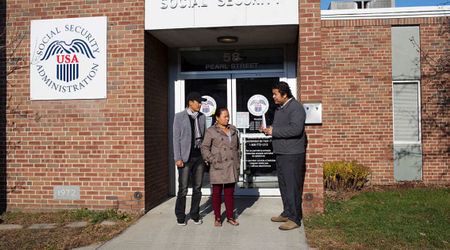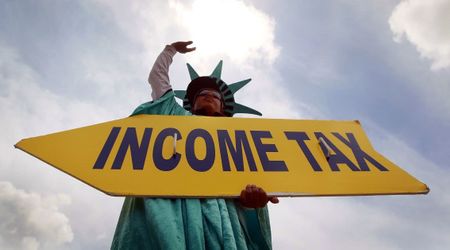Why Are Americans Struggling With High Credit Card Debt? House Rent Is One of the Key Factors

Americans are racking up credit card debt as the cost of everyday necessities and rent remain high. While the U.S. economy is broadly healthy, some Americans seem to be struggling with high rents and credit card balances following over two years of high inflation. Members of mostly lower- and middle-income groups who tend to be renters are falling behind, as per an AP report. These people can potentially face further deterioration of their financial health as the Fed is not expected to lower interest rates anytime soon.
Why now is a crucial time to pay off your credit card debt https://t.co/Lx8W5sPZ5O
— The Associated Press (@AP) February 6, 2024
How high is credit card debt in the US?
According to the New York Federal Reserve Bank's Quarterly Report on Household Debt and Credit, US residents added $48 billion to their credit card balances in the third quarter of 2023. The total credit card debt stood at $1.08 trillion in Q3 of 2023. This is expected to only increase in the Q4 report, hitting a record high. This is particularly worrying as the average interest rate on a bank credit card is at its highest (roughly 21.5%,) since 1994.
Another report from the credit rating company Moody’s showed that the percentage of loans that a bank believes will never be repaid are well above their 2019 levels and are expected to rise in 2024, AP News reported.
Why is credit card debt so high?

One of the primary reasons behind people relying on credit cards to pay bills is the ongoing inflation crisis. Despite inflation falling considerably from a peak of 9.1% in 2022, it remains well above the Federal Reserve's 2% goal. Further, the cost of everyday necessities is up by 17.6% compared to pre-inflation crisis levels, as per a Fox Business report. This has put severe financial pressure on most U.S. households, which are forced to pay more for food and rent. While the food prices are up 33.7% from the start of 2021, shelter costs are up 18.7%.
What about rent?
Renter households across the U.S. have felt the pinch of the rising costs coupled with rising rent prices. While the median rent for several states has plateaued in the past few months, it remains stunningly high compared to the pre-pandemic levels.
The median asking rent is just above $1,700, which is down $63 from its peak in July 2022. https://t.co/phwRQBt2PP
— KY3 News (@kytv) January 31, 2024
The median rent for a property with up to two bedrooms has jumped from $1,424 at the end of 2020 to $1,713 at the end of 2023, according to realtor.com. This has put renter households under more financial stress leading them to borrow more.
Outlook for 2024
According to the AP report, residents are not expected to see any relief from banks or interest rates anytime soon. The Federal Reserve has signaled that the first interest cut is still months away. Further, credit card interest rates have remained extremely high compared to what the Fed charges for loans.
We’ve just published our first National Rent Report of 2024! Read now to see how the year of the American renter has officially begun: https://t.co/CJC7l6Pbs6 pic.twitter.com/pJEZNqGyro
— Zumper (@Zumper) January 24, 2024
For renters, the outlook looks just a little positive. Zumper’s National Rent Report indicated that the national median rent for one- and two-bedroom homes have remained steady in the past couple of months but they remain high at $ 1,496 and $1,847, respectively.
However, the Sun Belt has experienced a decline in rent prices, per a GoBankingRates report. Cities with falling rents include El Paso, Texas, and Gilbert and Glendale Arizona. Meanwhile, cities like Durham, Rochester, Minneapolis Jersey City, Chicago, Columbus, and Syracuse have seen no positive shift in rent prices.





















